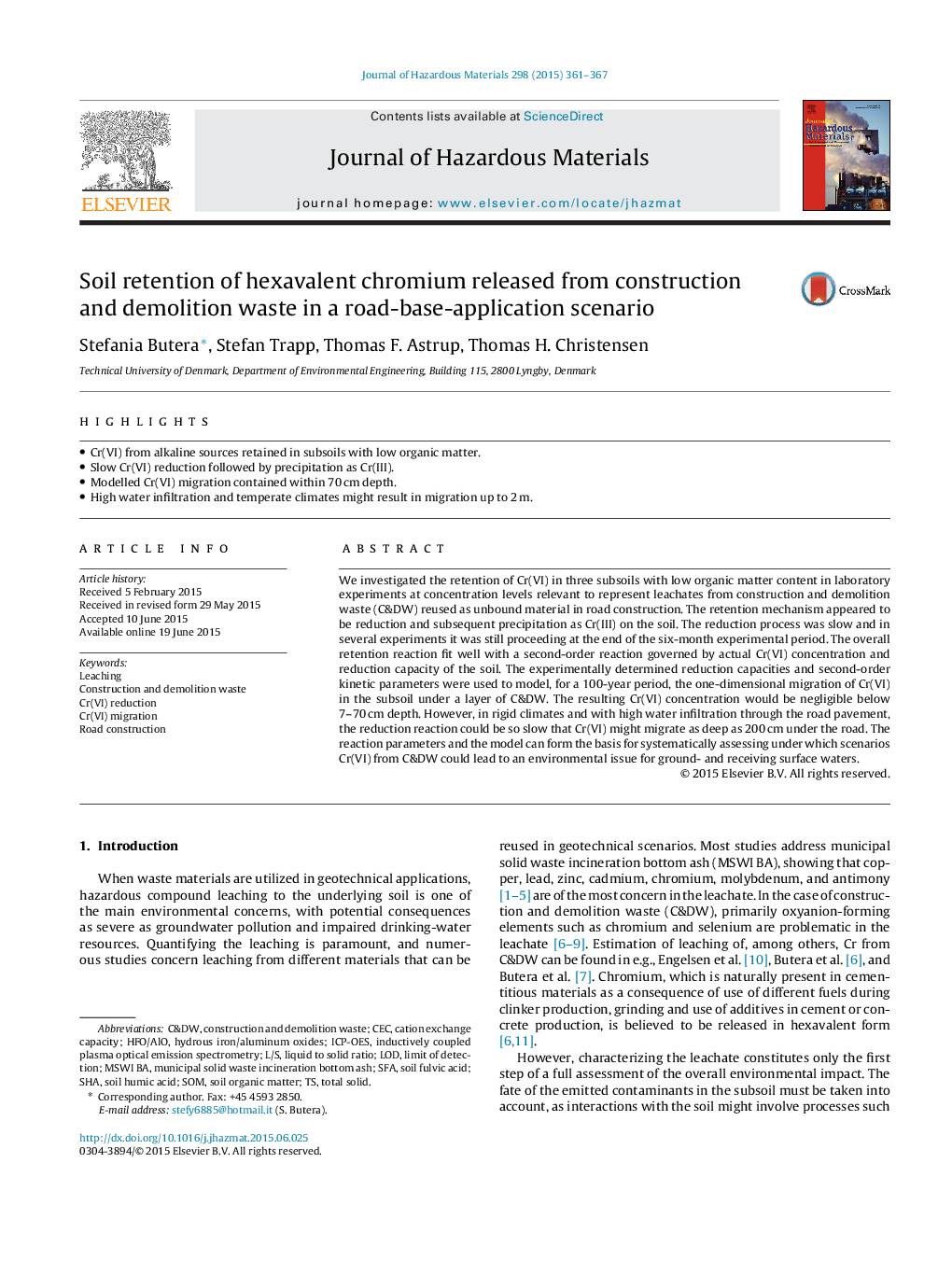| Article ID | Journal | Published Year | Pages | File Type |
|---|---|---|---|---|
| 575868 | Journal of Hazardous Materials | 2015 | 7 Pages |
Abstract
We investigated the retention of Cr(VI) in three subsoils with low organic matter content in laboratory experiments at concentration levels relevant to represent leachates from construction and demolition waste (C&DW) reused as unbound material in road construction. The retention mechanism appeared to be reduction and subsequent precipitation as Cr(III) on the soil. The reduction process was slow and in several experiments it was still proceeding at the end of the six-month experimental period. The overall retention reaction fit well with a second-order reaction governed by actual Cr(VI) concentration and reduction capacity of the soil. The experimentally determined reduction capacities and second-order kinetic parameters were used to model, for a 100-year period, the one-dimensional migration of Cr(VI) in the subsoil under a layer of C&DW. The resulting Cr(VI) concentration would be negligible below 7-70Â cm depth. However, in rigid climates and with high water infiltration through the road pavement, the reduction reaction could be so slow that Cr(VI) might migrate as deep as 200Â cm under the road. The reaction parameters and the model can form the basis for systematically assessing under which scenarios Cr(VI) from C&DW could lead to an environmental issue for ground- and receiving surface waters.
Keywords
Related Topics
Physical Sciences and Engineering
Chemical Engineering
Chemical Health and Safety
Authors
Stefania Butera, Stefan Trapp, Thomas F. Astrup, Thomas H. Christensen,
